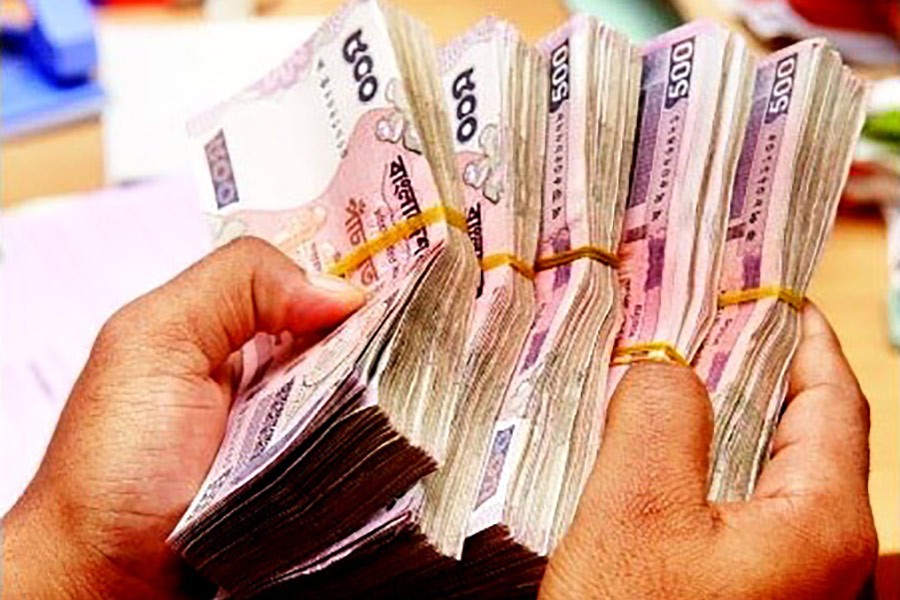The call money rate in the local money market took a dip to the lowest level in more than one year on Thursday, the last working day before the weekend, indicating the presence of excess liquidity in the market.
This has been attributed by treasury heads of a number of banks to the reduction in Cash Reserve Ratio (CRR) that came into effect on April 15 last.
But the executives do not see any immediate impact of such liquidity on the lending rates of banks as they view it as a "temporary phenomenon" in the money market.
Rather, they said a "stable" market can help lower the lending rates.
The call money rate fell by around 1.0 percentage point in a month to 3.57 on Thursday. A year back the rate was 3.78 per cent, according to the data on weighted average call money rates prepared by the Bangladesh Bank.
The call money rate denotes the trend of overnight borrowing by banks and non-bank financial institutions from the banking system to meet their urgent demand for funds.
Officials at the treasury departments of different commercial banks told the FE that there were some transactions, in which the call money rates were much lower than the weighted average one on the last working day of the week.
The officials, mostly senior treasury executives, said this does not guarantee that the lending rate will fall.
"This is a temporary phenomenon," said one official at a private commercial bank familiar with the development.
Some top treasury executives said the remittance inflow and export receipts are less than expected. On the other hand, the import demand is on the rise.
In such a situation, the central bank will mop up money by selling dollars to meet the demand for the greenback , they said.
"If the central bank mops up money to tackle the dollar shortage, there will be no adequate liquidity in the money market and there will be little room for immediate lending rate reduction," said the treasury head of a commercial bank.
They, however, said the scenario is temporary, as Tk 100 billion (10,000 crore) injected into the money market on account of a cut in the CRR is not a big amount.
The top executives at the treasury departments said the cutback on the CRR, a small fraction of the total deposits of customers which commercial banks have to hold as reserves with the central bank, has left its bearing on the call money rate.
The central bank reduced the CRR by 1.0 percentage point recently in relaxation of the monetary policy.
On the other hand, some executives say it will take time before the private lenders witness the impact of equal sharing of government enterprises' deposits between private and state-owned banks.
The state-owned banks see a low advance-deposit ratio (ADR) unlike a number of private banks.
To strike a balance, the government issued an order recently necessitating the state-owned and private commercial banks to share the government agencies' deposits on an equal basis (50:50).
Earlier the ratio was 25:75 and the government agencies, mostly autonomous organisations and corporations, used to deposit less with private commercial banks.
The new order is expected to increase the flow of funds in the private banks.
"As far as my observation is concerned, there is still no visible impact of the deposits of state-owned organisations on the money market," said a treasury head at a commercial bank.
He, however, said the latest deposit sharing measure will impact the money market, though it will take time.
"It will take time, but I cannot say when it will impact the market, as all government agencies do not deposit their money at one go," he added.
They, however, pointed out another important reason behind the fall in the call money rate: The central bank almost stopped sale of Bangladesh Bank bills.
A treasury head at another private commercial bank told the FE that the central bank was trying to bring down the lending rate to the single digit level, given that there is a need for a stable money market to achieve that.
On the other hand, economists familiar with the developments in the money market told the FE that the impact on deposit rates will be felt much quicker than the lending rates.
Dr Zahid Hussain, lead economist at the Dhaka office of the World Bank, told the FE that the deposit rates would fall quicker and to a larger extent. But "the lending rates will fall much slower in response to the reduction in the CRR," he commented.
He, however, said the underlying cause is a deficit in corporate governance in banks, particularly in the areas of loan risk management and collection of non-performing loans.
Banks faring badly in the areas are the ones having the most difficulties complying with the CRR.
"The CRR reduction helps such banks avoid the penalties for non-compliance, but it does little to incentivise improvement in corporate governance," Dr Hussain said.


